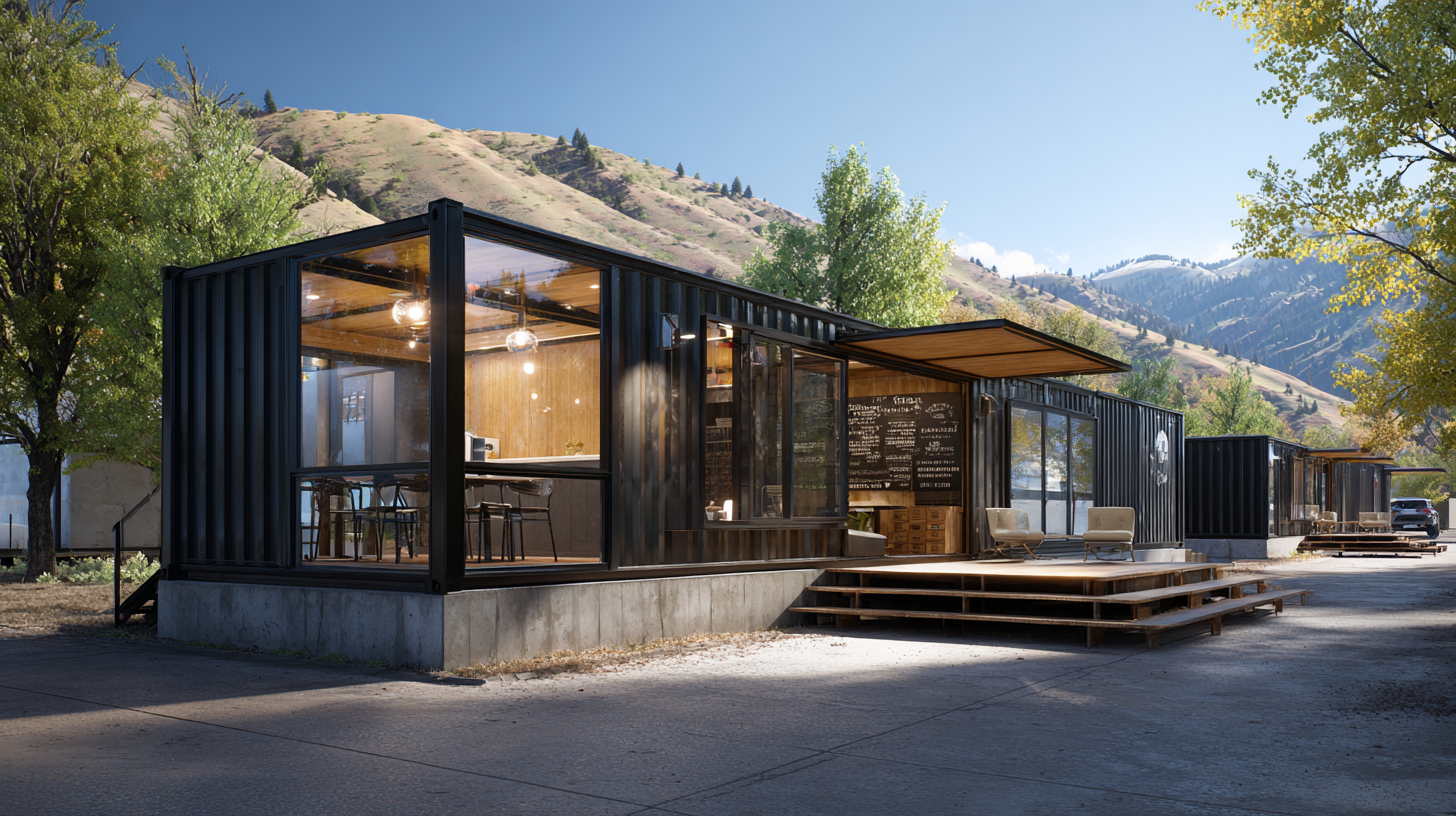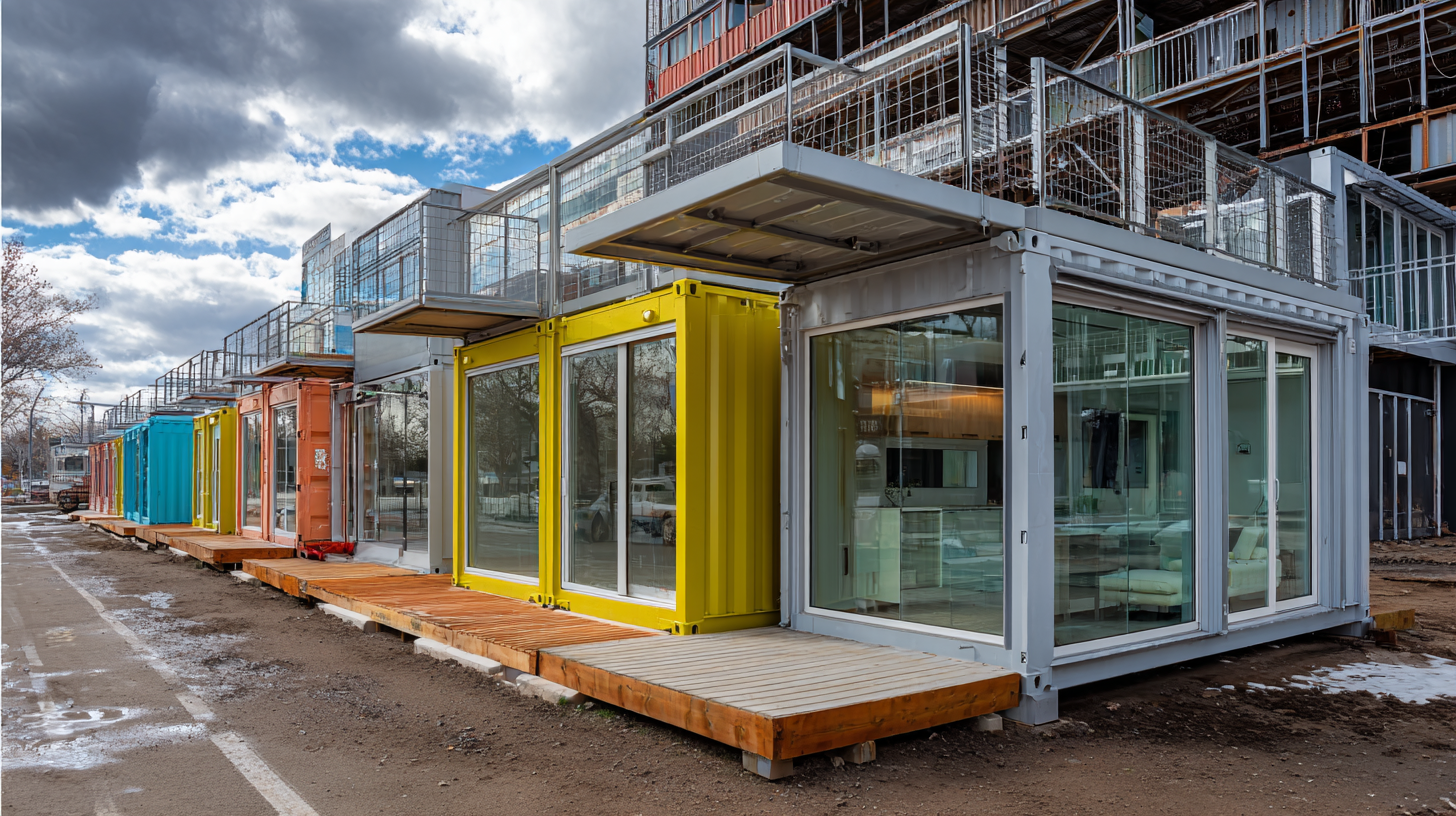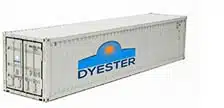Exploring the Future of Modular Container Buildings: Sustainable Solutions for Modern Living
As urbanization accelerates and the demand for sustainable living solutions intensifies, modular container buildings are emerging as a transformative answer to modern housing challenges. These innovative structures not only offer flexibility and efficiency in design but also significantly reduce construction waste and energy consumption, aligning with contemporary sustainability goals. In this exploration of the future of modular container buildings, we will delve into various strategies and tips that leverage digital technology and innovative practices to enhance their functionality and appeal. From smart home integrations to eco-friendly materials, the possibilities are as vast as they are exciting. Join us as we uncover how these adaptable living spaces can redefine our approach to housing, foster community resilience, and pave the way for a greener, more sustainable future.

The Rise of Modular Container Buildings in Urban Development
The rise of modular container buildings is reshaping urban development, offering an innovative solution to accommodate growing populations in cities. These structures, made from repurposed shipping containers, provide an efficient and sustainable alternative to traditional construction methods. As urban areas grapple with limited space and escalating costs, modular buildings emerge as a practical approach for developers and city planners alike.
Tips: When considering modular container buildings, prioritize locations with existing infrastructure to reduce overall transportation and setup costs. Additionally, explore the option of stacking containers to maximize vertical space, enhancing the number of units without expanding the footprint.
The versatility of container buildings allows for diverse applications, from affordable housing units to pop-up shops. Their design can be easily adapted to meet specific needs, making them suitable for various uses in urban environments. As more cities embrace this trend, modular container buildings will play a crucial role in sustainable urbanization, contributing to efficient land use and minimizing the ecological footprint of new developments.
Tips: Engage with local architects and designers who specialize in modular designs to ensure that your project meets both aesthetic and functional requirements. Furthermore, consider incorporating green technologies, like solar panels or green roofs, to boost sustainability.
Innovative Designs: Merging Aesthetics with Functionality in Container Homes
The evolution of modular container buildings has transformed the landscape of modern living, combining innovative designs with practicality. Container homes are no longer merely utilitarian structures; they embody creativity and aesthetics, allowing homeowners to express their individuality. Architects and designers are pushing boundaries by incorporating vibrant colors, unique shapes, and environmentally friendly materials, making these homes not just shelters but also visual statements in their respective environments.
Functionality is at the heart of container home design. Flexible layouts and the ability to repurpose spaces make modular homes ideal for various lifestyles. Open floor plans, smart storage solutions, and integration of natural light enhance the living experience, ensuring that each unit is both livable and stylish. Furthermore, with the emphasis on sustainability, these homes often feature energy-efficient systems and eco-friendly practices, making them a responsible choice for modern dwellers who prioritize both form and function in their living spaces. The result is a harmonious blend of beauty and practicality, showcasing the immense potential of modular container buildings in shaping the future of housing.
Sustainable Materials and Technologies Driving Modular Construction
The rise of modular container buildings is reshaping modern living, driven by the adoption of sustainable materials and innovative technologies. One major advancement is the use of recycled and eco-friendly materials in construction. By utilizing containers that have reached their end of life, builders can significantly reduce waste and minimize the environmental impact of new developments. Additionally, sustainable insulation materials and energy-efficient windows contribute to creating more energy-efficient living spaces, ultimately reducing utility costs for occupants.

When considering modular construction, it's essential to focus on materials that promote sustainability. Tip: Look for locally sourced materials to minimize your carbon footprint and support the local economy. By choosing recycled metals and sustainable wood products, you can enhance the ecological benefits of your project. Moreover, integrating green technologies, such as solar panels and rainwater harvesting systems, can lead to a self-sufficient living environment, further emphasizing the sustainability aspect of modular containers.
Incorporating smart technologies into modular buildings also plays a crucial role in enhancing their sustainability. These technologies allow for efficient monitoring and management of energy consumption, ensuring that resources are used wisely. Tip: Invest in smart home systems that can optimize energy use and enhance overall living comfort, making your space both modern and eco-friendly. As we explore the future of modular container buildings, the fusion of sustainable materials and cutting-edge technologies will undoubtedly play a significant role in shaping a better, greener living experience.
Cost-Effectiveness and Efficiency: The Financial Advantages of Modular Living
The rise of modular container buildings is increasingly recognized for their cost-effectiveness and efficiency, offering a practical solution to modern living challenges. Research from McKinsey & Company indicates that modular construction can reduce costs by up to 20% compared to traditional building methods. This is primarily due to the streamlined assembly process and reduced labor requirements, as components are pre-fabricated off-site and then transported for quick installation. Such efficiency is not only beneficial for developers but also for occupants, as it can lead to more affordable housing options in an era where real estate prices are ballooning.

Furthermore, the financial advantages extend beyond initial construction costs. A report by the National Association of Home Builders (NAHB) highlights that modular homes can lead to lower energy bills, with some models designed for high performance, achieving Energy Star certification. This translates to significant long-term savings for homeowners, as energy efficiency reflects directly on utility costs. As we move towards a more sustainable future, the appeal of modular container buildings lies in their dual capability of providing affordable living spaces while minimizing environmental impact through reduced waste during construction and decreased energy consumption in the long run.
Future Trends: Smart Technologies in Container Building Solutions
The future of modular container buildings is closely intertwined with the rapid advancements in smart technologies, particularly in the realm of the Internet of Things (IoT). As the IoT market is projected to grow significantly from $597.3 billion in 2023 to an astonishing $4,062.3 billion by 2032, integrating these technologies into container building solutions presents a unique opportunity for sustainable living. The potential of IoT in monitoring energy usage and optimizing efficiency positions modular container homes as a viable alternative for modern housing demands.
Moreover, innovations in the logistics sector, driven heavily by AI and technology upgrades, are set to enhance the functionality of modular container buildings. For instance, smart logistics trends reveal that AI-driven warehousing and sustainable solutions can significantly reduce operational costs, thereby benefitting modular construction methods. The anticipated compound annual growth rate of 24.3% in the IoT market signifies a growing appetite for smart building solutions that can adapt and respond to real-time data, ultimately shaping the future of how we conceive and live in our spaces. This paradigm shift not only caters to individual preferences but also aligns with the overarching goal of sustainable development.


